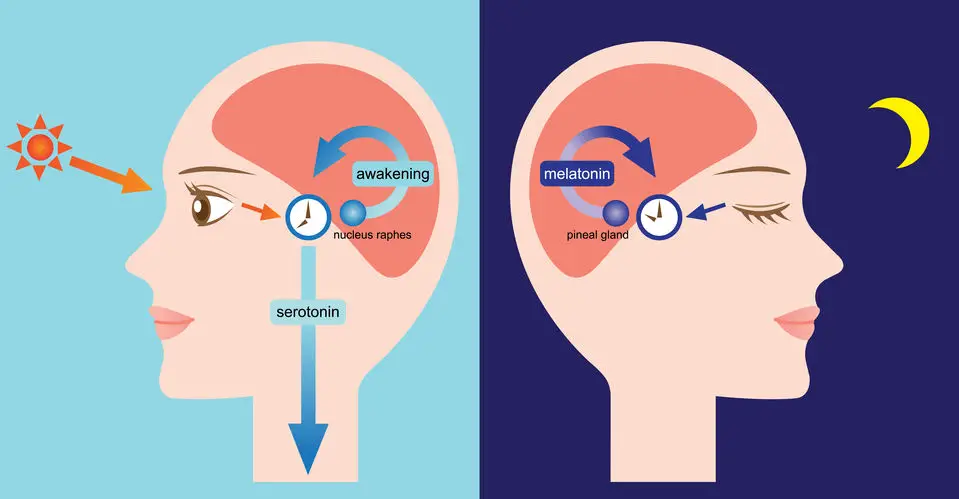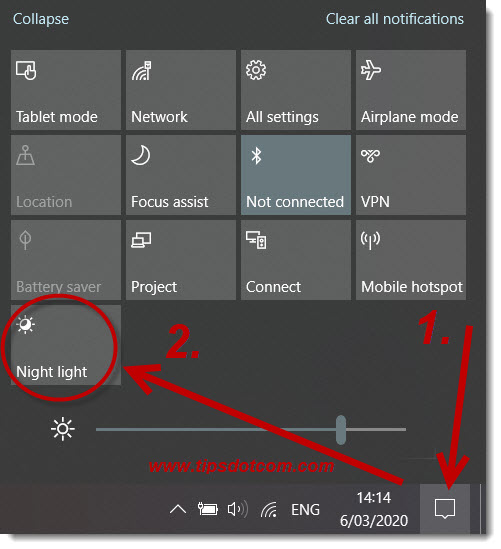Windows 10 Night Light
What does Windows 10 night light have to do with your circadian rhythm and why would you care? You may or may not know that circadian rhythms are biological, hormonal and behavioral changes that occur in living organisms as they respond to light and darkness. The fact that (most) people sleep at night and are active during the day is because we follow our circadian rhythm or circadian clock.
During ages and ages our biological clocks have been fine-tuned for optimal performance in accordance with the natural light-dark cycle, but in our modern technological world we live in a more artificial environment when it comes to light and dark.

Dr. Satchin Panda, a professor at the Salk Institute for Biological Studies in La Jolla, California whose work deals specifically with the circadian rhythm, talks about experiments with hamsters, where they take out the tiny part of the brain (suprachiasmatic nucleus or SCN) that serves as the master regulator of circadian rhythm. These hamsters no longer have any sense of time and go to sleep at random times and will wake up after two to three hours.
In case you’re wondering what these hamsters have to do with you and with Windows 10 night light, please read on.
Luckily, chances that you will become involved in an experiment where a professor will cut out your SCN from your brain are pretty limited, but even with your SCN intact your circadian rhythm may be challenged. That’s because we live in a more artificial environment where we have artificial light, computer screens, iphones, etcetera at times when it’s actually dark out there.
And that can cause you to have trouble sleeping.
Specifically, with regards to our master clock, light is what regulates this rhythm. In the morning, when we wake up, we need that big jolt of light to make us more alert and to activate, suppress our levels of melatonin and make us more alert. We are learning a lot about what quality of light and how much light we need in the first half of the day to keep us awake and what kind of light we need in the evening so that we can go to bed well.
As it turns out, if we have blue-shifted light during the first half of the day, that may help us to stay alert, but in the evening we actually should stay away from that bright, blue light.
That’s where the Windows 10 night light setting comes in.
Windows 10 Night Light To Help Your Circadian Rhythm

Windows 10 night light is a feature that filters out blue light so your biological clock will get less signals that it’s that part of the day where you need to be alert and active. It’s designed so that your normal melatonin levels can be reached more easily so that your body can start preparing for the night time (melatonin production can be compromised under the influence of bright blue light).
So how do you activate Windows 10 night light?
You
can easily enable Windows 10 night light via the notification area in
the bottom-right corner of your screen. Simply click the notification
icon and then click “Night light” and you’re done.

That’s it, that’s how easy it is to switch on Windows 10 night light to actively reduce the amount of blue light emitted from your screen, so your brain will get less “activation” and “stay alert” signals that mess with your natural sleep cycle or circadian rhythm.
Of course in the morning, when you don’t need to worry about signals that can disturb your sleep, you can just as easily deactivate Windows 10 night light via the same notification icon in the bottom-right corner.
With this article I hope that you may have discovered something new about the features in Windows 10 or maybe even found a way to enjoy a better night of sleep. If you found it helpful, please click the like button below or leave a short comment - thank you.
If you are interested in finding out more about circadian rhythm and the effects on health and fitness, feel free to check out the following YouTube interview of Dr. Satchin Panda by Dr. Rhonda Patrick (opens in a new window).
As an alternative to Windows Night Light, you might also want to take a look at f.lux for Windows.
If you've enjoyed this article or found it useful, I'd appreciate it if you'd let me know by clicking the Like (or Share) button below. Thank you!






New! Comments
Have your say about what you just read! Leave me a comment in the box below.